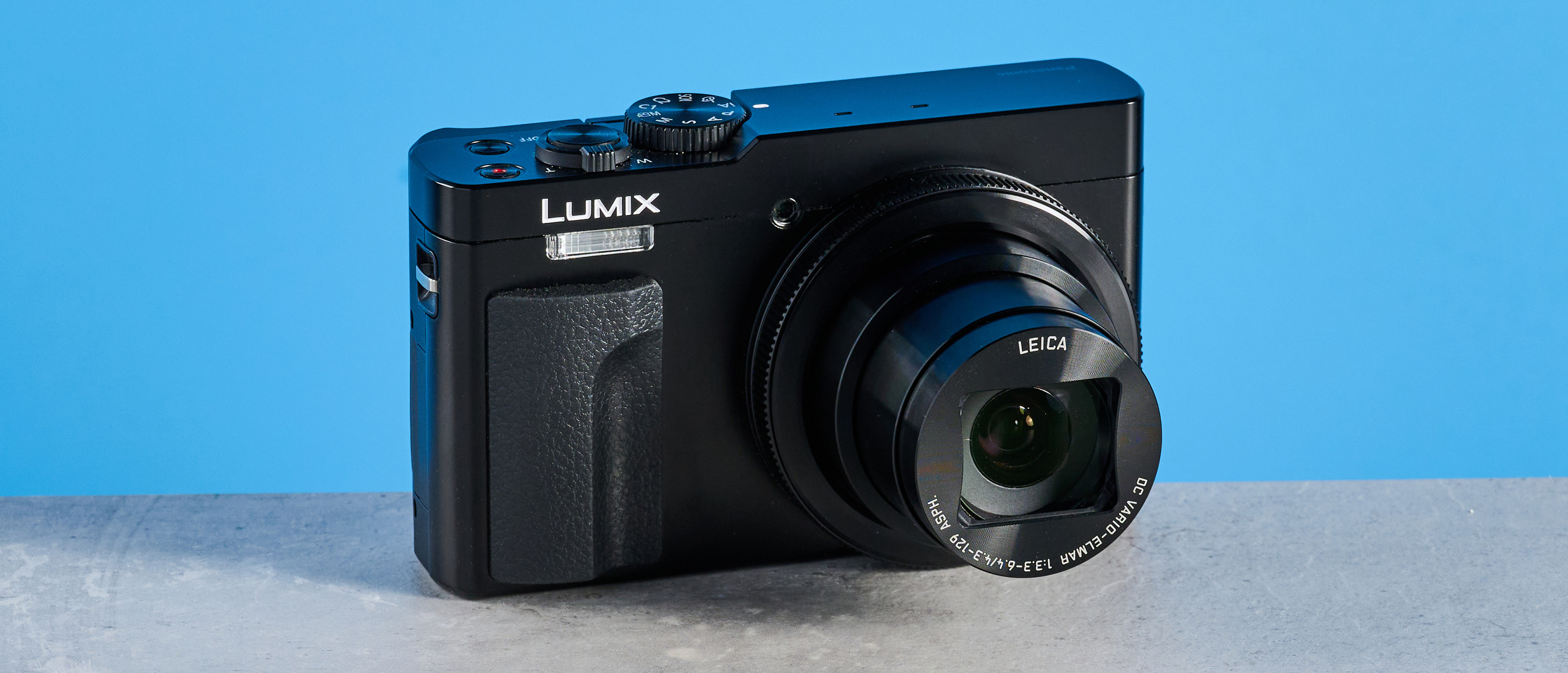Samsung’s Newest QLED TV Makes 8K a Reality
Samsung just announced the first 8K set to reach US stores, the 85-inch Q900FN QLED 8K TV.
Updated Aug. 30 at 12:45 p.m. Berlin time to reflect our first impressions of the 85-inch 8K QLED TV after seeing it at IFA.
Samsung is bringing 8K television to the masses this October with the launch of the Samsung 85-inch 8K QLED TV. Originally dubbed the Q9S when we saw it at CES and later this spring, the model will officially be named the Samsung 85-inch Q900FN QLED 8K TV, and will be part of Samsung’s QLED line of premium TVs. When it ships, it will be the first 8K television to come to consumers.
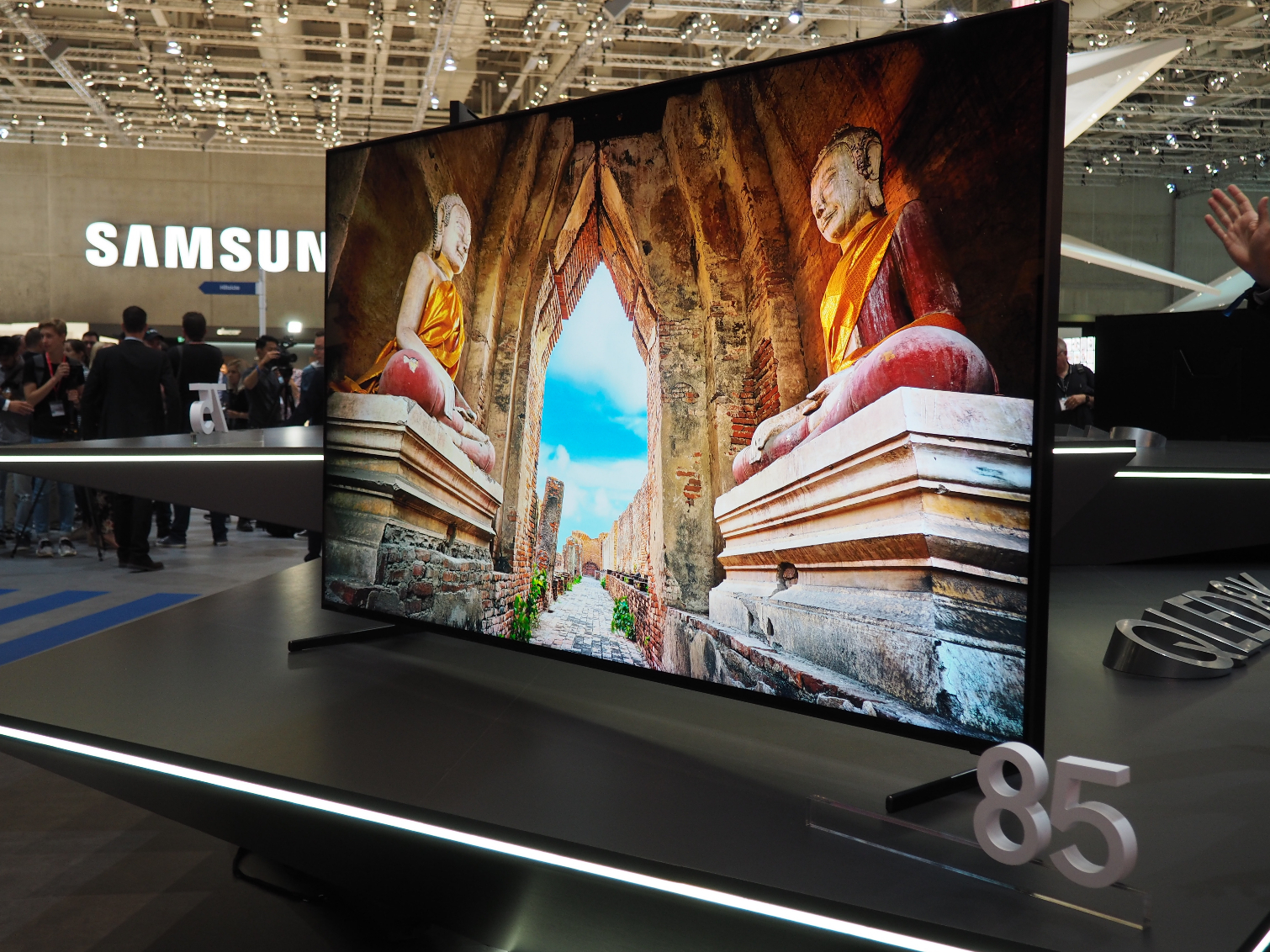
Samsung isn’t the only company working on 8K. LG showed off its own 88-inch 8K prototype at CES earlier this year, and Sony boasted that its 85-inch device could blast users with 10,000 nits of brightness. But while these competitors both had demonstration-ready prototypes earlier this year, Samsung appears to be beating them to the punch on retail availability, as neither LG nor Sony have announced release plans for a similar product.
Samsung will roll out an entire range of 8K models to various markets globally, but the US will only be getting one model, the 85-inch Q900FN. The new TV not only quadruples current pixel counts, with 7680 x 4320 resolution, it also features advanced AI-driven upscaling and a range of other premium features, including HDR support and a peak brightness of 4,000 nits.
We got up close and personal with the 8K set at the IFA trade show in Berlin, and can attest to how good it looks. But will it be worth the (inevitably) high price? Let's dive into what Samsung is packing into this premium TV.
Better Resolution, Boosted Backlight, QLED Quality
The Q900FN’s 85-inch panel is packed with more than 30 million pixels, but that’s not the only thing Samsung’s bringing to the table.
Sign up to get the BEST of Tom's Guide direct to your inbox.
Get instant access to breaking news, the hottest reviews, great deals and helpful tips.
The 8K panel also offers 120Hz refresh rate, which is equal to that seen on other premium TVs – top-of-the-line models frequently offer 120Hz, but the majority of models on the market offer 60Hz refresh rates.
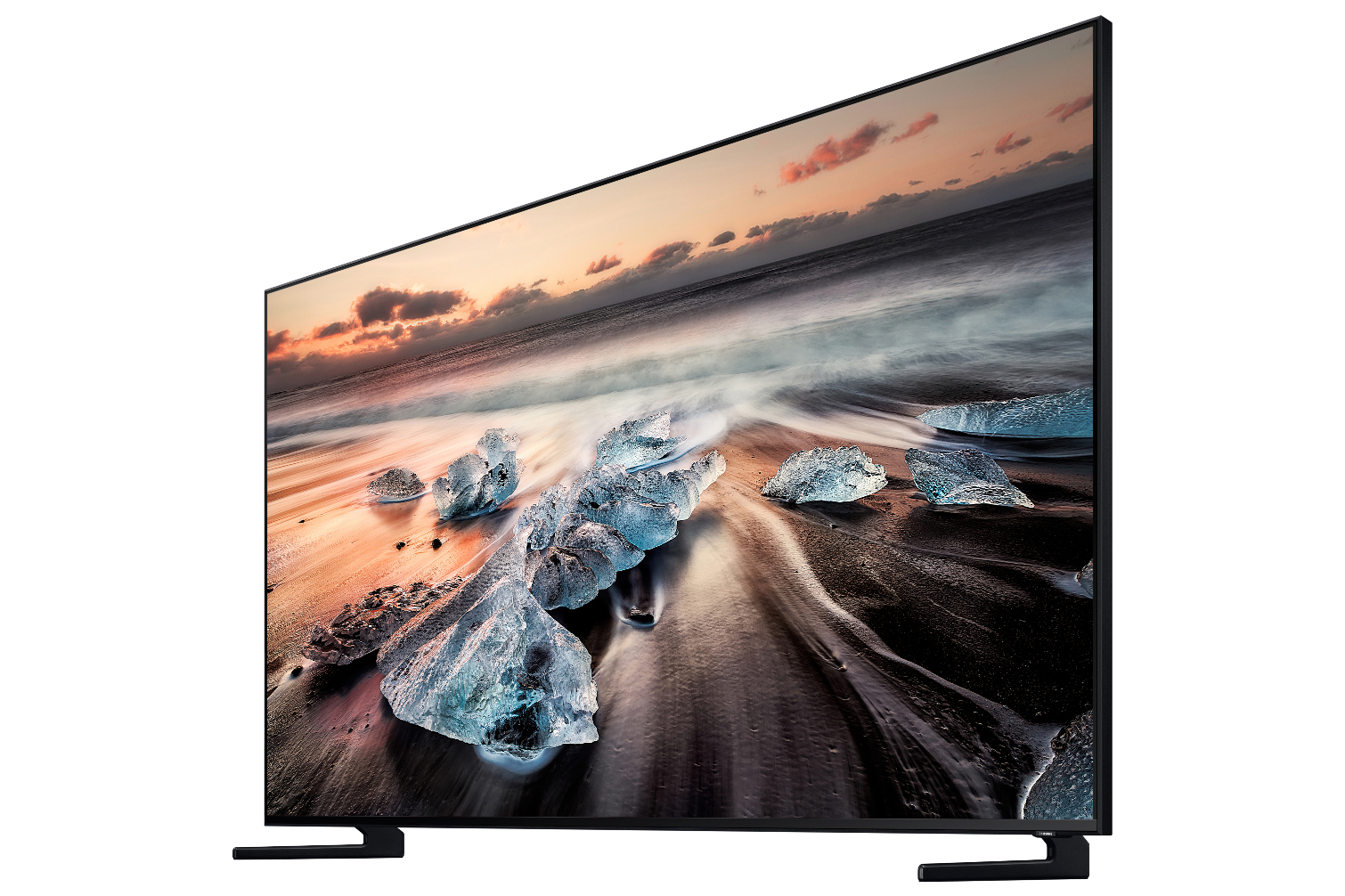
Samsung is stepping up its support for high-dynamic range content, too. The Q900FN has a reported peak brightness of 4,000 nits, and what Samsung calls 100-percent color volume. It sounds a whole lot like 12-bit color depth, which leaves some unanswered questions about the supported HDR standards. Right now the only standard that supports both the brightness and color capabilities offered on the set is Dolby Vision, which Samsung has routinely avoided in favor of its own HDR10+ format. Samsung is calling the new TV’s format support Q HDR 8K, and says that it’s powered by HDR10+, so we can expect an enhanced version of HDR10+ to come alongside the new TV (though it may only be offered on this model to start).
Samsung reps were also unwilling to name a specific number of backlighting zones used on the new TV, but will say that it features “Direct Full Array Elite” backlighting. In the past, Samsung has touted its advanced light blooming algorithms, which actually adjust backlighting to minimize unwanted halos around objects while still providing full illumination and sharp contrast. But the addition of that super bright backlight leaves us wondering what lies behind the Q900FN’s 85-inch LCD panel.
Samsung would only say that the current number of dimming zones would be comparable to current QLED models. However, in a previous demo of the 8K TV, one Samsung rep let slip that the display uses a variant of the company’s microLED technology to deliver as many as 22,000 individual lighting zones. (Samsung reps would not confirm this number when we asked about it in relation to today’s announcement.)
AI-Powered Upscaling
While 8K resolution is an impressive step forward for consumer-level displays, it’s an iterative one, accomplished by fitting more pixels into a larger display rather than making substantial jumps in pixel density. The real innovation isn’t in the display, but in the processing that powers it.
Anyone with an 8K display will find themselves facing a problem that still faces 4K – a lack of UltraHD content. While 8K content will surely be coming soon, Samsung’s solution is to make all other content, from 720p video to the latest 4K movie, look better on the bigger, higher-resolution screen. When we saw this upscaling in action at a demo earlier this year, the level of detail and clarity was notably better than the upscaling seen on current TVs, displaying 720 source material that looked as good as many 4K videos I’ve seen.
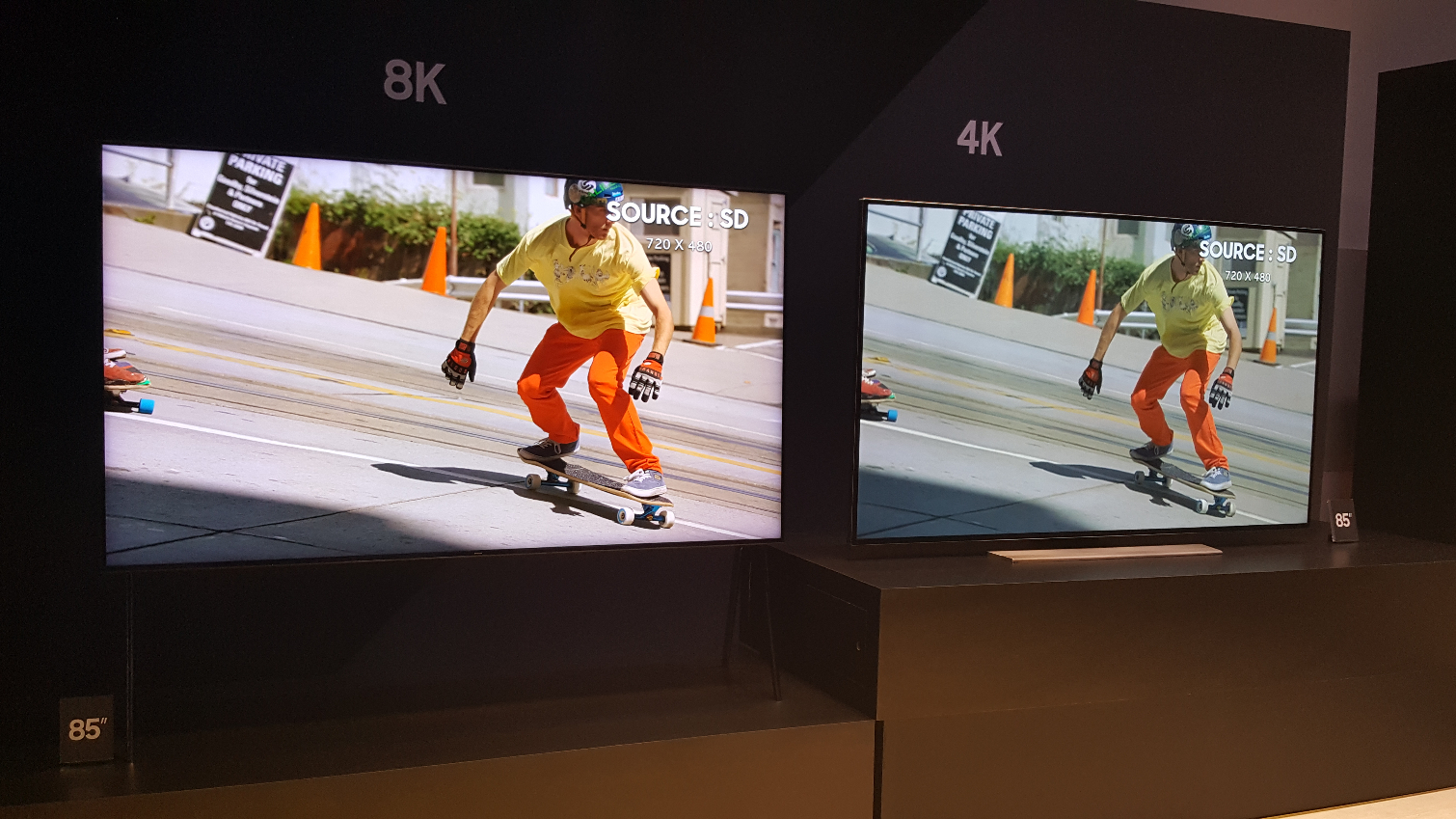
[Credit: Tom's Guide]
It does this with a combination of processing power and machine learning. The Q900FN will be equipped with Samsung’s new 8K Quantum Processor, which boasts some serious upscaling capabilities. But this isn’t a one-and-done solution that will leave early adopters behind as soon as competitors figure out something better; instead, Samsung plans a continually updated experience that uses AI to continually offer better upscaling and enhancement through the life of the TV.
But this is more than traditional upscaling. Instead of extrapolating additional pixels through simple doubling techniques that make existing pixels look larger, or anti-aliasing, which smooths pixelation along edges, Samsung promises a range of enhancements that make any content look good in 8K. Samsung claims it’s on-board processing will deliver not only better resolution and clarity, but also improved depth, crispness and detail.
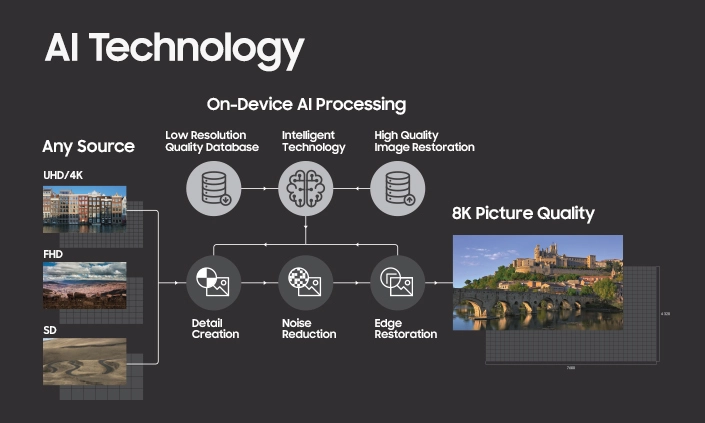
[Credit: Samsung/SamMobile]
Samsung maintains (and is rapidly expanding) a giant database of video material, with millions of video samples at various resolutions. By training machine learning algorithms to compare these different resolution samples, Samsung is fine tuning what it hopes will be the ultimate in upscaling tools, delivering the most life-like image, regardless of the resolution of the source material.
This includes traditional processing tricks, like upscaling and noise reduction – which cleans up stray video artifacts and cleans up jagged edges – as well as adding content and detail that may not be present in the original source material. And this applies to any and all content, from your DVD and Blu-Ray collections to streaming media and game consoles. Everything that goes up on the TV will be enhanced to look its best on the 8K display.
The new approach uses a growing database of low and high resolution sample sets to go beyond manipulating existing pixels to actually understanding what it sees, and inserting textures and sharpening detail beyond what exists at lower resolutions. Samsung’s master database provides the raw material for machine learning that will continually improve this process, meaning that the algorithms used won’t be static, but should improve over time.
The firmware updates that are already used to update smart TV functions and patch security holes will now also include updates to this AI-powered upscaling.
Samsung showed off the effects of upscaling on a 4K set and its new 8K model at the company's sprawling booth at the IFA trade show in Berlin this week. A standard definition, 729 x 420 resolution video clip of two broadcasters delivering the day's headlines looked pixelated on the 4K set. On the 8K model, the women's features were smoother and brighter — I couldn't even tell it was a low-res video. A full HD, 1929 x 1080p video showing an aerial view of buildings and a close-up of purple flowers looked almost grainy on the 4K TV, but perfectly clear upscaled to the 8K set.
Samsung's new 8K TV is clearly capable of handling upscaling with ease — every video looked smooth and crisp. I have no idea where I would even fit an 85-inch TV in my house, but when everything looks so good, it's hard not to want this giant 8K set.
Premium Features
As a part of the QLED lineup, Samsung is also outfitting the Q900FN with all of the premium touches offered on its other flagship TVs. The giant 85-inch display will feature Samsung’s low-powered Ambient Mode, which lets you display art, realtime content like weather and news headlines and other decorative images on the TV when not in use. Most useful on this size TV might be the chameleon-like ability to display an image that matches the background wall, making the big TV disappear when not being viewed.
The TV will minimize cable clutter with Samsung’s One Connect Box and Invisible Connection, which uses a separate box for connecting external media sources and soundbars, and connects to the TV over a single slim cable.
It will also be every inch a Samsung smart TV, with Samsung’s One Remote, which we’ve consistently praised in reviews, the excellent Tizen-based smart TV platform, built in Smart Things compatibility and the Bixby voice assistant.
Availability and Price
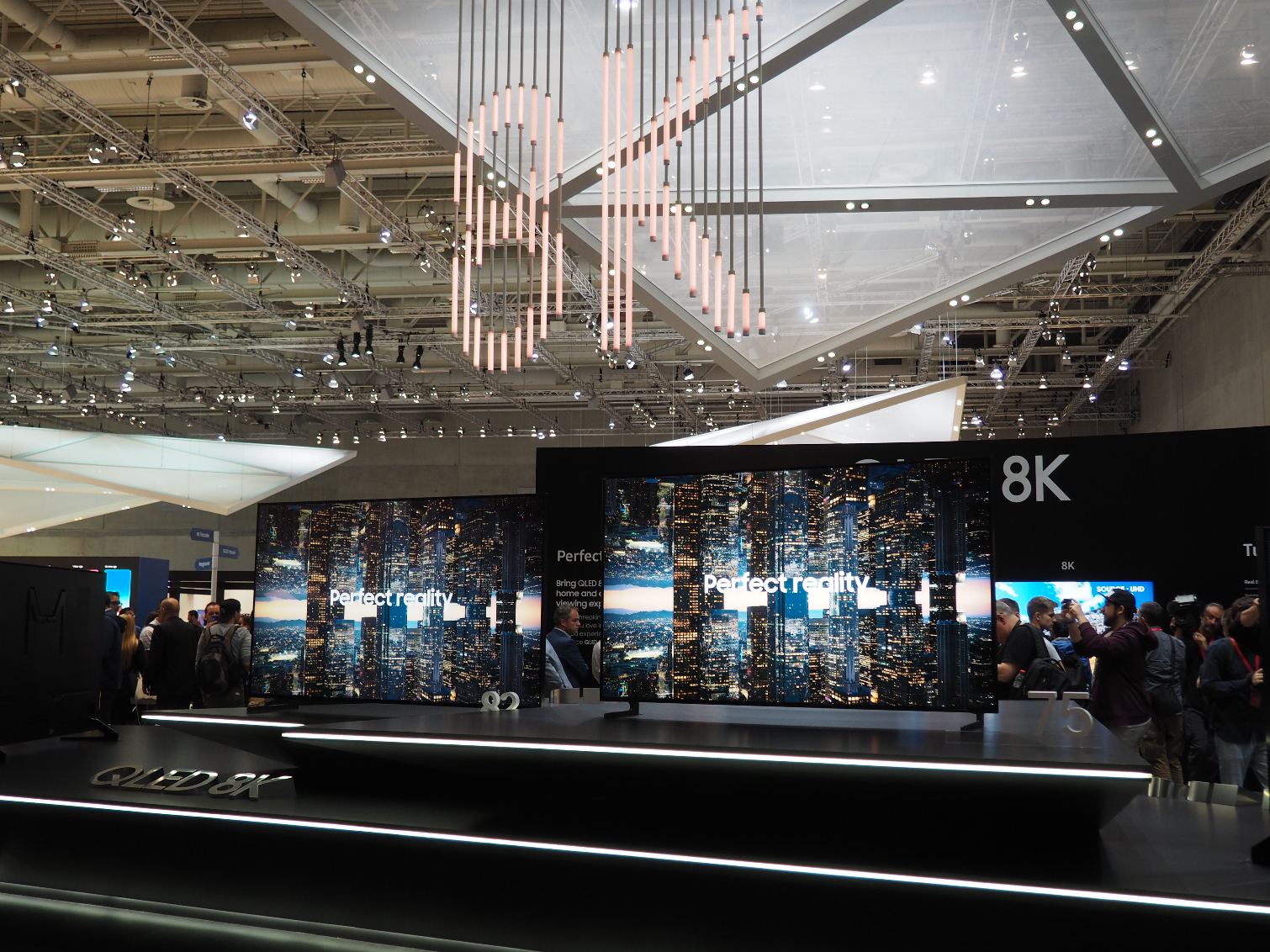
Samsung isn’t sharing the full details of the Q900FN’s availability just yet, but we do know that retail availability starts in October. While some TVs in the 80-inches or larger range can only be bought directly from the manufacturers, Samsung reps have said that it will be available through other retailers, and that distribution will be similar to the rest of its QLED lineup.
Samsung’s current monster premium set, the 88-inch Q9F, is sold by both Amazon and BestBuy, so you can expect that the new 8K model will also be available through these retailers.
The bigger question mark is the price. Samsung hasn’t released pricing details yet, but has said that pricing will be in line with the rest of the QLED model line. Given that the 4K Samsung 88-inch Q9F retails for $19,999, it’s safe to say that the 85-inch 8K model will likely be pricey, well into the 5-figures range.
Brian Westover is currently Lead Analyst, PCs and Hardware at PCMag. Until recently, however, he was Senior Editor at Tom's Guide, where he led the site's TV coverage for several years, reviewing scores of sets and writing about everything from 8K to HDR to HDMI 2.1. He also put his computing knowledge to good use by reviewing many PCs and Mac devices, and also led our router and home networking coverage. Prior to joining Tom's Guide, he wrote for TopTenReviews and PCMag.
-
darkomaledictus Lol 20k, have to pay that new adopter tax. Also very little content for years. Price will be coming down when content is available...Reply

